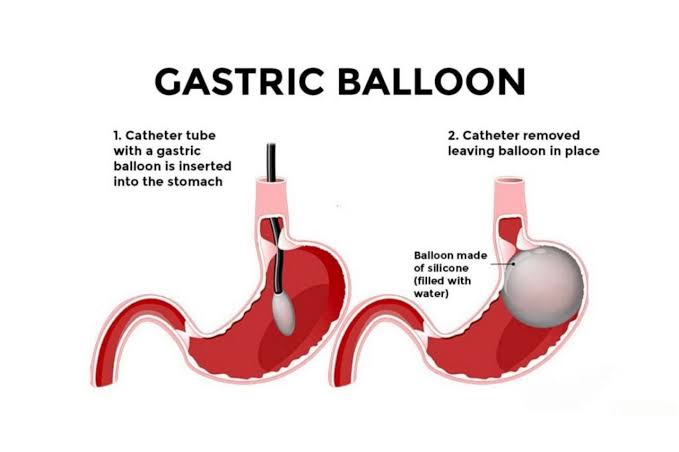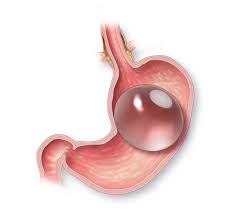Lapsurgery.com.au, The Future of Gastric Balloon A Promising Path in Weight Management – Gastric balloons, a non-surgical option for weight loss, have gained significant attention in the medical field over recent years. These devices, typically made of silicone, are inserted into the stomach and inflated to reduce the available space for food, thereby promoting a feeling of fullness and aiding in weight loss. As obesity rates continue to rise globally, the future of gastric balloons appears promising, with advancements in technology and broader acceptance paving the way for more widespread use.
Technological Advancements

- Improved Design and Materials: The next generation of gastric balloons is expected to feature improved designs and materials. These advancements will aim to enhance patient comfort, reduce side effects, and increase the durability of the balloons. Bio-compatible materials that minimize adverse reactions and ensure safety will be a focal point of development.
- Adjustable and Longer-Lasting Balloons: Future gastric balloons may offer adjustability, allowing doctors to modify the size of the balloon based on the patient’s progress and needs. Additionally, research is underway to extend the lifespan of these devices, making them a more sustainable option for long-term weight management.
- Non-Endoscopic Insertion and Removal: Innovations are being directed toward non-endoscopic insertion and removal methods. Current procedures often require endoscopy, which, while minimally invasive, still involves some level of discomfort and risk. New techniques aim to simplify the process, making it more accessible and less daunting for patients.
Integration with Digital Health Technologies
The future of gastric balloons will likely see a strong integration with digital health technologies. Wearable devices, mobile apps, and telemedicine platforms can provide continuous monitoring and personalized feedback, enhancing the overall effectiveness of the treatment. Patients will be able to track their progress, receive dietary and exercise recommendations, and maintain close communication with their healthcare providers, all of which can contribute to better outcomes.
Expanding Indications and Accessibility
Gastric balloons are currently indicated for patients with a Body Mass Index (BMI) of 30-40 who have not succeeded with traditional weight loss methods. However, future research and clinical trials may expand these indications, making the treatment available to a broader range of patients, including those with lower BMI or those requiring a pre-surgical weight loss intervention.
Additionally, efforts are being made to make gastric balloons more affordable and accessible. As the technology becomes more advanced and production scales up, costs are expected to decrease, potentially making this option available to a wider demographic.
Regulatory and Safety Considerations
As with any medical innovation, the future of gastric balloons will be shaped by rigorous regulatory standards and ongoing safety evaluations. The U.S. Food and Drug Administration (FDA) and other regulatory bodies around the world will continue to play a crucial role in ensuring that new products meet stringent safety and efficacy criteria. Post-market surveillance and patient registries will provide valuable data to further refine and improve these devices.
Personalized Treatment Approaches
One of the most exciting prospects for the future of gastric balloons is the potential for highly personalized treatment plans. Advances in genomics, microbiome research, and personalized medicine are set to revolutionize the approach to weight loss. By understanding the individual differences in metabolism, genetic predispositions, and gut flora, healthcare providers can tailor gastric balloon treatments to optimize outcomes for each patient.
For instance, genetic testing could identify patients who are more likely to benefit from gastric balloons compared to other weight loss methods. Similarly, analyzing a patient’s gut microbiome might provide insights into how they metabolize food, which could inform specific dietary recommendations alongside the balloon treatment.
Integration with Holistic Health Programs
Future gastric balloon treatments will likely be integrated into comprehensive weight management programs that address not just the physical aspects of obesity, but also the psychological and behavioral components. These holistic programs will include nutritional counseling, psychological support, and behavioral therapy to help patients develop healthier habits and maintain their weight loss long-term.
Such integrated approaches recognize that sustainable weight loss is multifaceted, requiring a combination of medical, nutritional, and psychological interventions. Gastric balloons will serve as a valuable tool within these broader programs, providing a physical aid to support lifestyle changes.
Global Expansion and Education
As the benefits and safety of gastric balloons become more widely recognized, there will be an increased effort to educate both healthcare providers and patients globally. Medical professionals will need training on the latest techniques for inserting and managing gastric balloons, as well as on how to integrate these devices into comprehensive weight management plans.
Efforts to raise awareness among the general public about the effectiveness and safety of gastric balloons will also be crucial. Educational campaigns can help dispel myths and misconceptions about the treatment, making more individuals open to considering it as a viable option for weight loss.
Potential Challenges
Despite the promising future, several challenges must be addressed to fully realize the potential of gastric balloons. These include managing potential side effects such as nausea, vomiting, and abdominal discomfort, which some patients experience. Additionally, ensuring long-term weight maintenance after the removal of the balloon remains a challenge, as some patients may regain weight without continued support and lifestyle changes.
Moreover, there are ethical considerations related to the accessibility and affordability of the treatment. As with many medical innovations, there is a risk that gastric balloons may initially be available only to those who can afford them, exacerbating health disparities. Efforts to make the treatment more affordable and accessible to diverse populations will be essential.
Closing
The future of gastric balloons in weight management is promising, with numerous advancements on the horizon that will enhance their efficacy, safety, and accessibility. Through technological innovations, integration with digital health and personalized medicine, and incorporation into holistic health programs, gastric balloons are set to become a cornerstone in the fight against obesity. However, addressing challenges related to side effects, long-term maintenance, and equitable access will be crucial for maximizing their impact.
As research and development continue, the medical community and patients alike can look forward to a future where gastric balloons offer a powerful, minimally invasive tool for achieving and sustaining a healthier weight, ultimately improving quality of life and reducing obesity-related health risks.

